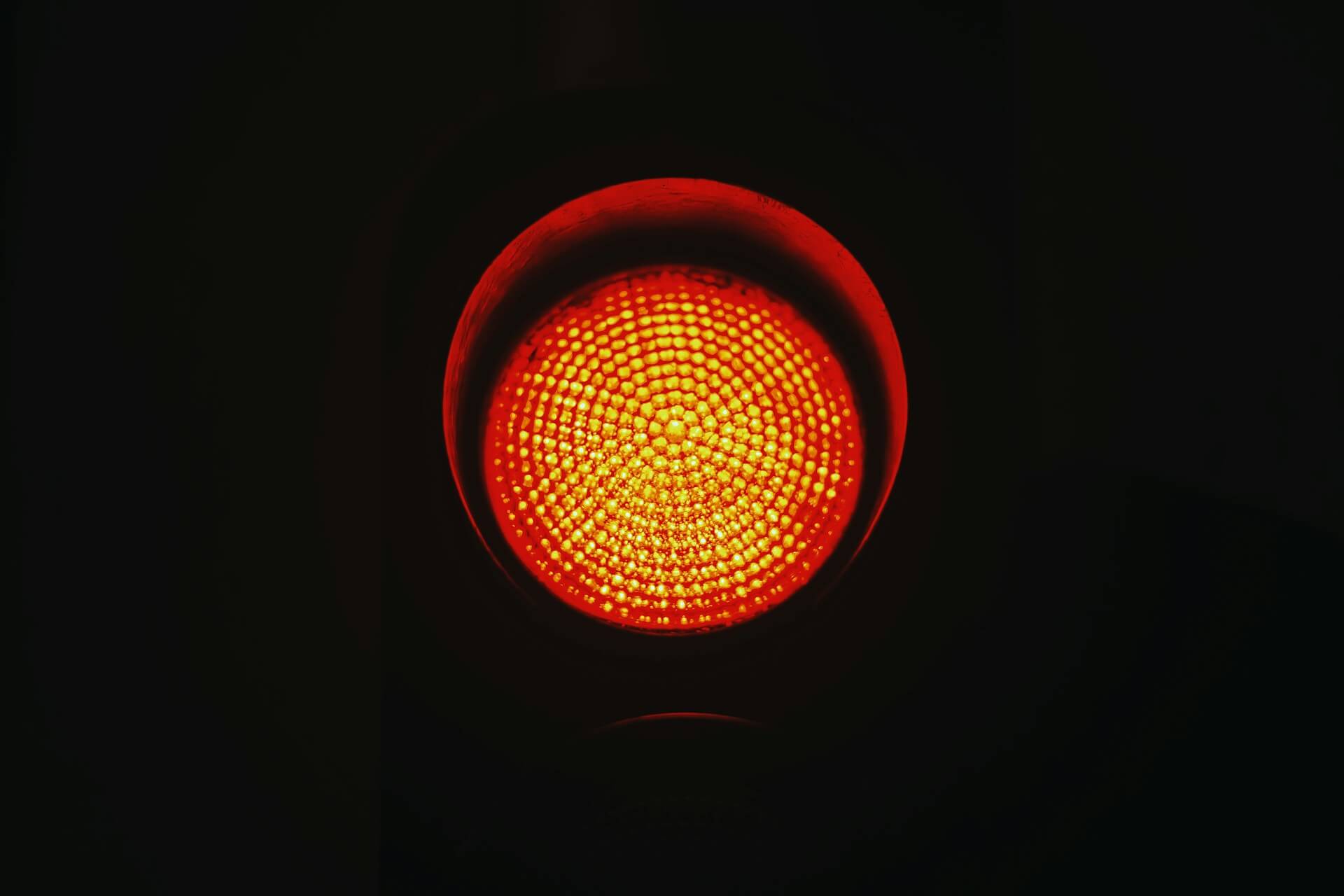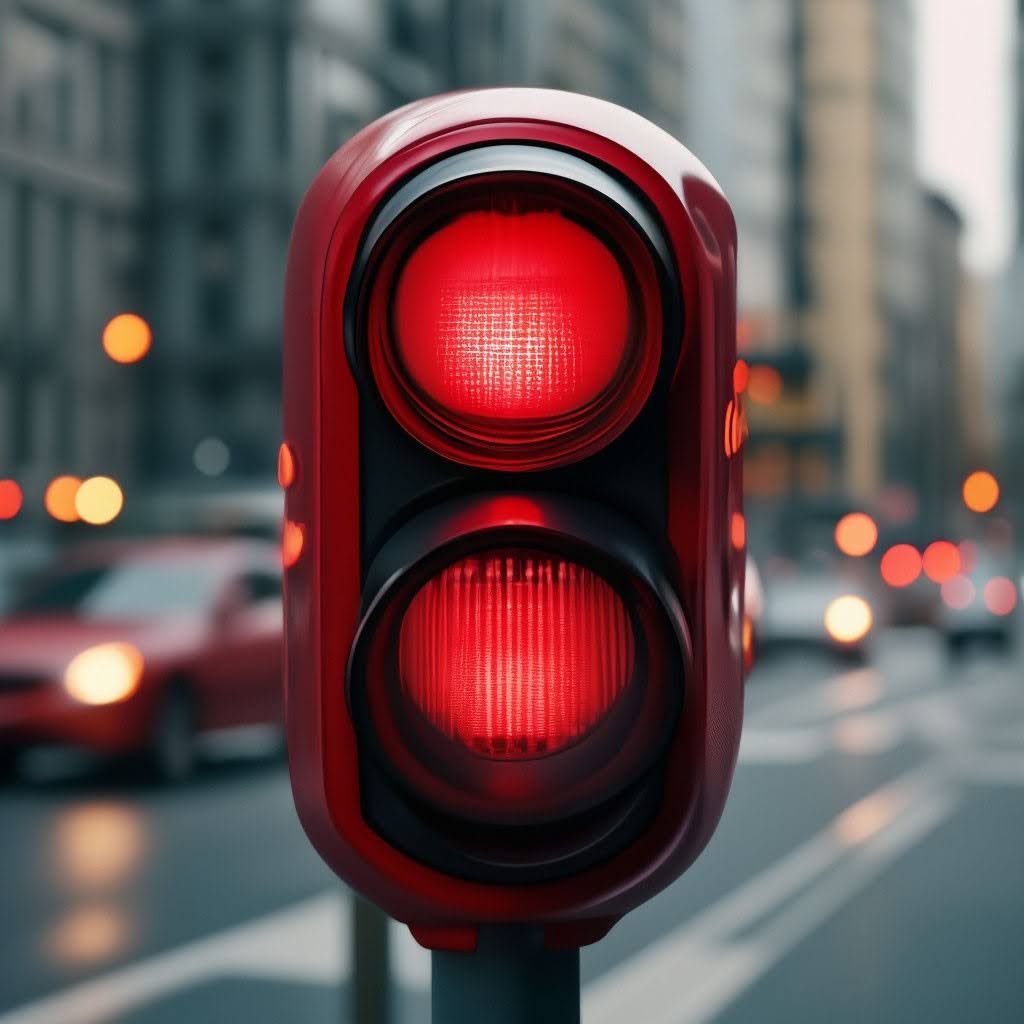Dubai is one of the most popular vacation destinations for tourists seeking luxury and foreign cultures. Naturally, renting a luxury sedan to explore the country by car is a common choice for visitors. However, traffic offenses in Dubai are often punished more severely than in other cities or countries. A prime example is running a red light. Below, we compare the regulations in Dubai (and the United Arab Emirates, UAE) with those in Germany.
What Constitutes a Red Light Violation in Germany vs. Dubai/UAE?
Drivers should be aware that traffic offenses can carry harsher penalties in other countries. This is already evident when comparing Germany to other European nations.
While Dubai employs a different traffic monitoring system, offenses are not punished more leniently. On the contrary, drivers face higher fines and risk having their vehicle impounded.
- In Germany, a red light violation occurs when a driver ignores the stop line at a red traffic light and subsequently enters the intersection.
- These two offenses are penalized separately, with the latter incurring a higher fine.
In the UAE, general traffic monitoring relies on the Redflex Traffic System. This system operates 24/7 at major intersections. Thanks to this technology, various traffic situations—including every red light violation—are perfectly monitored. In Dubai, this is one of the most severely punished traffic offenses.
Tip: Anyone planning to drive during a vacation in the UAE should thoroughly familiarize themselves with the applicable traffic regulations and specificities beforehand.
What Are the Penalties for Running a Red Light in Dubai/UAE?
Running a red light in Dubai results in a heavy fine. The amount primarily depends on the type of vehicle involved, as detailed below:
| Vehicle Type | Fine Amount | Points/Impoundment |
|---|---|---|
| Light Vehicle | 1,000 AED | 12 Points / 30 Days |
| Heavy Vehicle | 3,000 AED | 16 Points / 60 Days |
| Motorcycle | 1,000 AED | 12 Points / 90 Days |
As the table shows, not only is a driving ban imposed, but the vehicle is immediately impounded for such an offense. This ensures the driver poses no further danger to other road users.
Additional requirements accompany these penalties:
- Light Vehicle: The driver must complete an additional driver training course.
- Heavy Vehicle: The driver’s commercial license is revoked (if applicable).
- Motorcycle: The rider must attend a safety workshop before reclaiming the motorcycle after the 90-day impoundment period.
Good to know: Depending on the current exchange rate, 1,000 AED is approximately 260 EUR. This helps gauge the severity of the respective fines.
Does Dubai/UAE Have a Points System Like Germany?
In Germany, traffic offenses are recorded in the Central Traffic Register («Fahreignungsregister») in Flensburg. Depending on the offense, drivers receive points, which can lead to consequences if accumulated:
- 1-3 Points: Recorded with no immediate action.
- 4-5 Points: Official warning and mandatory «driving aptitude seminar»; one point is then deducted.
- 8+ Points: Driving license revoked.
Dubai, however, uses a «Black Points» system, which functions similarly. The number of points issued varies by offense, for example:
- Excessively loud vehicle: 12 Black Points
- Using phone while driving: 4 Black Points
- Driving with worn/expired tires: 4 Black Points
- Riding motorcycle without helmet: 4 Black Points
As noted earlier, a red light violation incurs 12–16 Black Points. Like in Germany, accumulating a certain number triggers further penalties. With 24 total Black Points, police are authorized to confiscate the driver’s license and impose a driving ban of up to one year.
What Role Do Speed Cameras & Traffic Cameras Play in Enforcing Red Light Violations in Both Countries?
As mentioned, the UAE’s traffic system employs numerous red-light cameras monitoring intersections from multiple angles. The 2023 Roads and Transport Authority (RTA) annual report recorded over 250 such cameras at Dubai intersections alone.
Violations are detected via image capture and camera recognition. The license plate is automatically checked and then manually confirmed by a traffic officer. Only then is a fine notice issued to the driver.
In Germany, intersections typically use a dual-camera system:
- The first camera triggers when a vehicle crosses the stop line;
- The second triggers when it crosses the intersection.
The relevant authority then sends a fine notice to the registered vehicle owner.

 Lamborghini
Lamborghini McLaren
McLaren Ferrari
Ferrari Rolls Royce
Rolls Royce Bentley
Bentley Porsche
Porsche BMW
BMW Mercedes
Mercedes Mini Cooper
Mini Cooper Hyundai
Hyundai Cadillac
Cadillac Audi
Audi Ford
Ford Tesla
Tesla Lincoln
Lincoln GMC
GMC Mazda
Mazda Jeep
Jeep Fiat
Fiat Hummer
Hummer Lexus
Lexus Dodge
Dodge Land Rover
Land Rover Nissan
Nissan Chevrolet
Chevrolet Toyota
Toyota Lixiang
Lixiang




